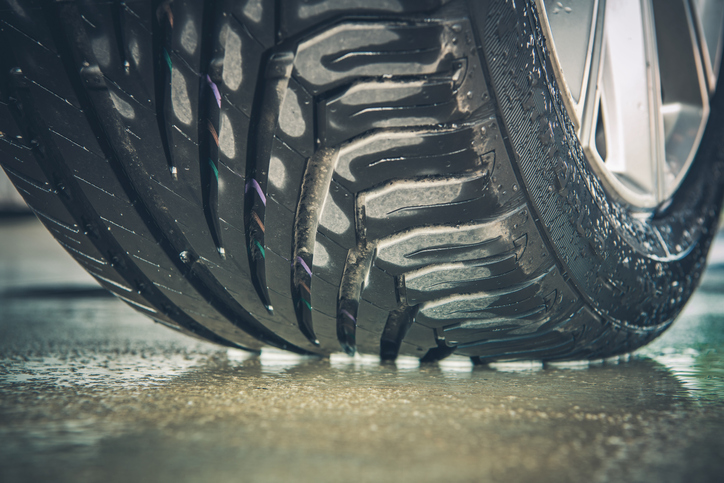DriveSafe Online Contributing Writer
Driving in bad weather can be dangerous. Rain, sleet, snow, high winds and extreme temperatures can affect road conditions, impair your visibility, and impact your driving capabilities and performance. More than 20% of crashes each year are weather-related. But it’s not snow or icy conditions that cause the most wrecks. The NHTSA reports that nearly 50% of weather-related accidents occur during rainfall.
The first 10-15 minutes after rain begins can be the most hazardous as water mixes with oils on the road to create a slippery surface. The more water on the street, the better the chance your tires will lose contact with the road. However, keep in mind that hydroplaning doesn’t occur only during floods. Depending on your speed, it is possible to hydroplane in as little as one-tenth of an inch of water.
What is Hydroplaning?
At lower speeds, tires with good tread will “wipe” the water from the road surface much like a windshield wiper cleans the windshield. As speed increases, the water cannot be removed fast enough and the tires start to ride up on the layer of water much like water skis.
Partial hydroplaning can start at about 35 miles per hour, and increases with speed until around 55 MPH, when the tires may lose all contact with the pavement. If this happens, you lose traction, and you cannot brake, accelerate or turn.
While wide tires are typically safer than narrow ones simply because they offer more rubber to stay in contact with the road, hydroplaning can occur at almost any time water is present.
How to Avoid Hydroplaning
To lower your chances of hydroplaning:
- Slow down when roads are wet
- Give yourself more space between your vehicle and the car in front of you
- Follow in the tracks of the car in front of you because it has already displaced water on the road
- If you hear a shushing sound from the tires, especially when changing directions, slow down
- Avoid changing lanes or passing other vehicles if possible
- Don’t use cruise control
- Keep your tires properly inflated and maintain good tread
- Steer around deep water when possible
If you find yourself hydroplaning:
- Stay calm
- Do not brake or turn suddenly
- Ease your foot off the gas until your vehicle slows and you can feel the road again
- Keep the steering wheel straight
- If you need to brake, do it gently with light pumping actions
- If your vehicle has anti-lock brakes, then brake normally; the vehicle’s computer will mimic a pumping action, when necessary
Hydroplaning can be a scary experience because you have little control over your vehicle, especially if you’re moving at highway speed, driving on curvy roads or traveling in traffic. Your best protection against weather-related offenses is being prepared with defensive driving knowledge. For more safe driving techniques, visit www.drivesafeonline.org.

Patrick M. is Editorial Director for the always expanding DriveSafe Online library of courses. With over two decades of experience developing award-winning training, he now focuses on innovating online driver safety training. Pulling from his background in journalism, he steers the wheel behind the creation of top-tier content that promotes a better journey—whether on the digital highway of learning or the real roads we travel every day.
